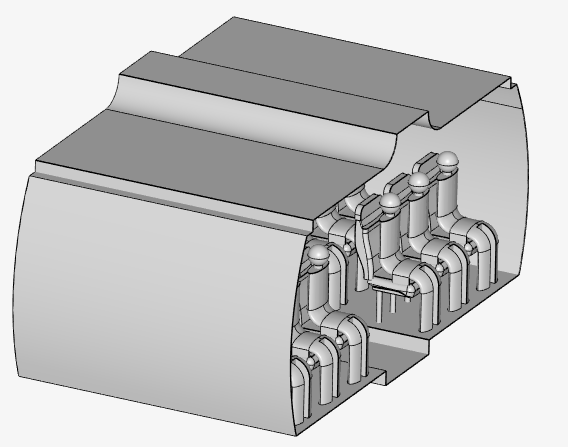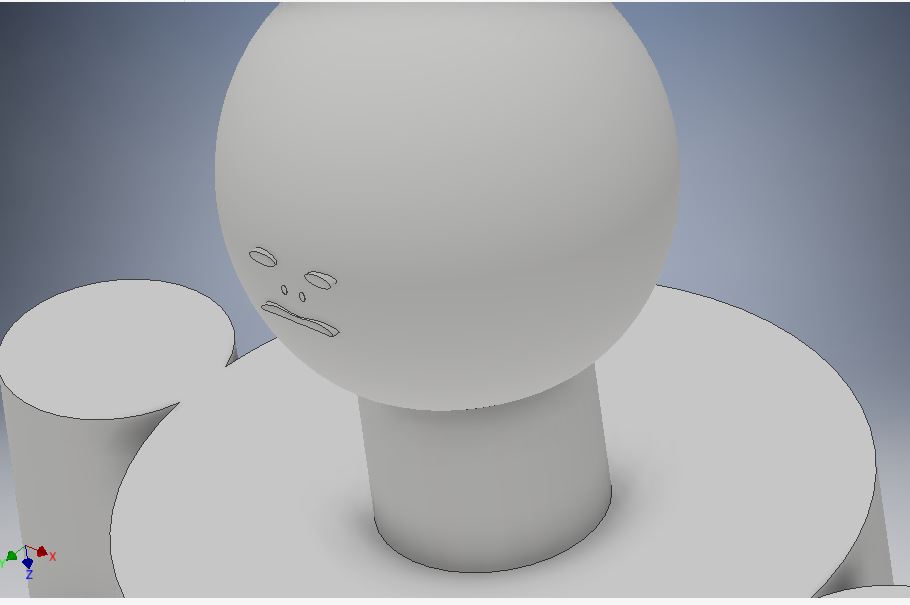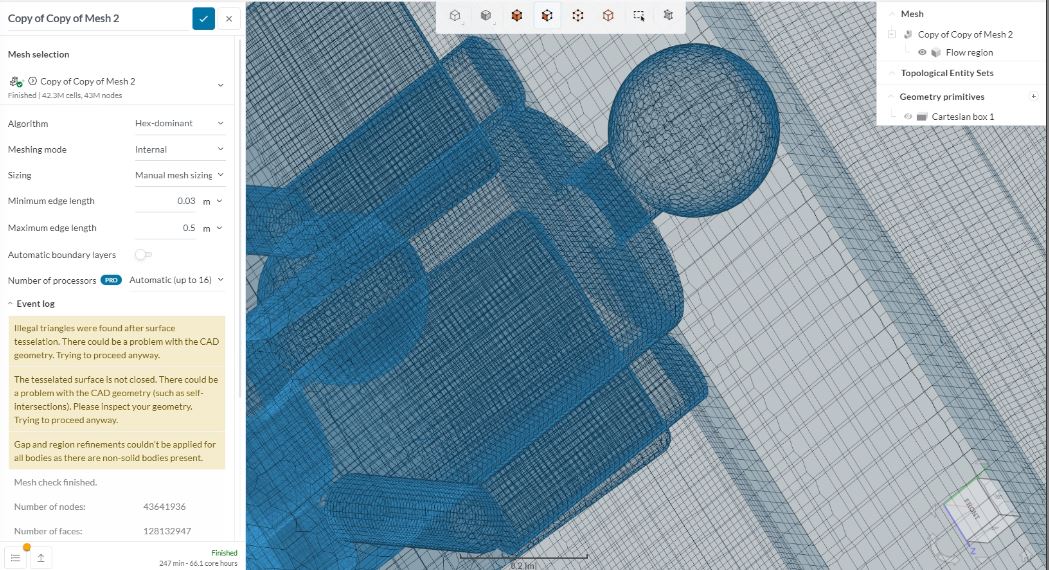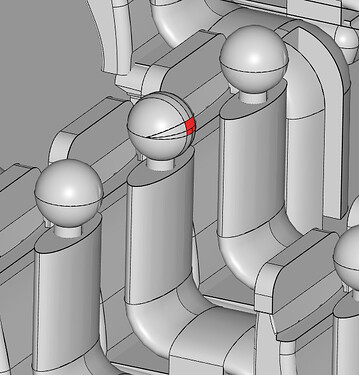Hi
I am tried creating a mesh for my simulation model which is a bus with passengers inside. I created a refinement region to try to best capture the flow around the passenger heads/faces where i will perform a transient simulation to analyse a cough flow dynamics in a bus with occupants. I made the human and bus CAD models using Autodesk Inventor 2017. I was able to generate a mesh, although it is not of the desired fineness as the details on the human head models (i.e. eyes, mouth and nose (shown in image attachment “head.jpg”): which are really important for my analysis) are not captured by the mesh. I tried refining the mesh around the heads to capture the mouth, nose and eyes but i keep on getting error message to change my mesh refinement.
With the fished mesh, i received warning messages sayings “Illegal triangles were found after surface tesselation. There could be a problem with the CAD geometry. Trying to proceed anyway.
The tesselated surface is not closed. There could be a problem with the CAD geometry (such as self-intersections). Please inspect your geometry. Trying to proceed anyway.
Gap and region refinements couldn’t be applied for all bodies as there are non-solid bodies present.” as shown in the image attached. It can also be seen that the details on the human head (mouth, nose, eyes) are not captured as mentioned previously (image “mesh1.jpg”)
.
I tried to look for any self-intersecting parts in my CAD models as the warning suggests but i could not find any.
Any help and advise would be highly appreciated!
This is my project link: https://www.simscale.com/workbench/?pid=2273530425584195225&mi=spec%3Addbb2703-cee4-46ed-aaca-527cff915f4a%2Cservice%3AMESHING%2Cstrategy%3A77&sh=72
Thank you.
1 Like
Hi thorong!
The mesh you created has 42.3M elements. Even so, it wasn’t possible to capture the details of the geometry. In my opinion, it suggests that you should simplify the geometry instead of refining the mesh.
You said the details in the human heads are important for your analysis. How do you intend to use them in the simulation? Perhaps there is an easier way to model the human faces.
Best,
Paulo
Hi @paulosantos
I need the mouth and nose to be specific. In my simulation, I am trying to simulate the spread of aerosols in the bus as a result of a cough and sneeze from certain human models. I will be using a scalar to represent the aerosols (for simplicity in my analysis). So if I can get the mouth and nose to be captured by the mesh, it would really help.
I don’t know how else I could change my human head models as I have tried to keep them very simple. The mouth area was drawn following a journal paper that I will be using as reference.
Please advise what else can I do.
Thank you.
Apologies I replied with my wrong user account (@tsholohrong)
"Hi @paulosantos
I need the mouth and nose to be specific. In my simulation, I am trying to simulate the spread of aerosols in the bus as a result of a cough and sneeze from certain human models. I will be using a scalar to represent the aerosols (for simplicity in my analysis). So if I can get the mouth and nose to be captured by the mesh, it would really help.
I don’t know how else I could change my human head models as I have tried to keep them very simple. The mouth area was drawn following a journal paper that I will be using as reference.
Please advise what else can I do.
Thank you."
I found this project about sneeze simulation in an airplane cabin.
The ceiling, sidewalls, and floor are completely smooth. They have no windows, doors, air conditioning inlets/outlets, etc. That would be one of the approaches that you could take.

To create the face you’re using very small extrusions. The nose, for example, is about 0.1 mm thick at the thinnest point. Small faces and edges often cause problems when creating the mesh. Take a look at this link. I suggest that you simplify the mouth and nose as shown below:
I also suggest that you remove the arms of the humans. In my opinion, they have little relevance to your simulation.
3 Likes
huge thanks for the link and valuable information. i’m working for something similar and that’s helpful! can i ask you other questions in the future if anything? you seem to be way more professional than me
2 Likes
Hey @pwesser! For sure. Feel free to ask whatever you want.
Hey @paulosantos
Thank you for the link to the sneeze simulation in an airplane cabin. It will definitely come in handy towards my simulation. I am still concerned about the warning message after I generated the mesh: “Illegal triangles were found after surface tesselation. There could be a problem with the CAD geometry. Trying to proceed anyway.
The tesselated surface is not closed. There could be a problem with the CAD geometry (such as self-intersections). Please inspect your geometry. Trying to proceed anyway.
Gap and region refinements couldn’t be applied for all bodies as there are non-solid bodies present.” . What are the implications of proceeding with the simulation while the warning is still showing? Will it be able to at least finish a simulation run and/or give some kind of sensible results?
I looked for self-intersections in my CAD tool (Autodesk Inventor) on my model but could not find any. Or maybe i am not looking for them correctly. Is there any other way that i could check for these maybe in another CAD tool and how? I don’t know if i am just being paranoid about the warning message maybe?
Looking forward to any advise.
Thank you.




